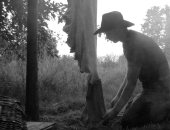
 10
10




 6
6




 6
6




 8
8




 4
4




“So I'm lightin' out for the territory, ahead of the scared and the weak and the mean spirited, because Aunt Sally is fixin’ to adopt me and civilize me, and I can't stand it. I've been there before.”
 6
6




Zone 6, 45 inches precipitation, hard clay soil




 5
5




May Lotito wrote:Very informative and timely, Thanks!
I have a few questions here:
1) do you mean the fleshed skin can be air-dried without any preservative?
2) what acid do you use to get pH below 2? I saw people use citric acid solid to make a solution.
3) when you use salt and acid to pickle the skin, is it the Lutan ( aluminum choride) that you use? I have aluminum formate but the solubility is low. I am wondering if pickling and alum treatment are better done separately.
The other day when I skinned a skunk with a 4×4 and a knife, my chickens just eagerly ate every bit of fat and meat! I turned the skin over and they were all scared away.
 5
5




Zone 6, 45 inches precipitation, hard clay soil





 3
3




 5
5




Zone 6, 45 inches precipitation, hard clay soil




 5
5




 2
2




Zone 6, 45 inches precipitation, hard clay soil





|
Mine! Mine! Mine! Here, you can have this tiny ad:
The new purple deck of permaculture playing cards
https://www.kickstarter.com/projects/paulwheaton/garden-cards
|




